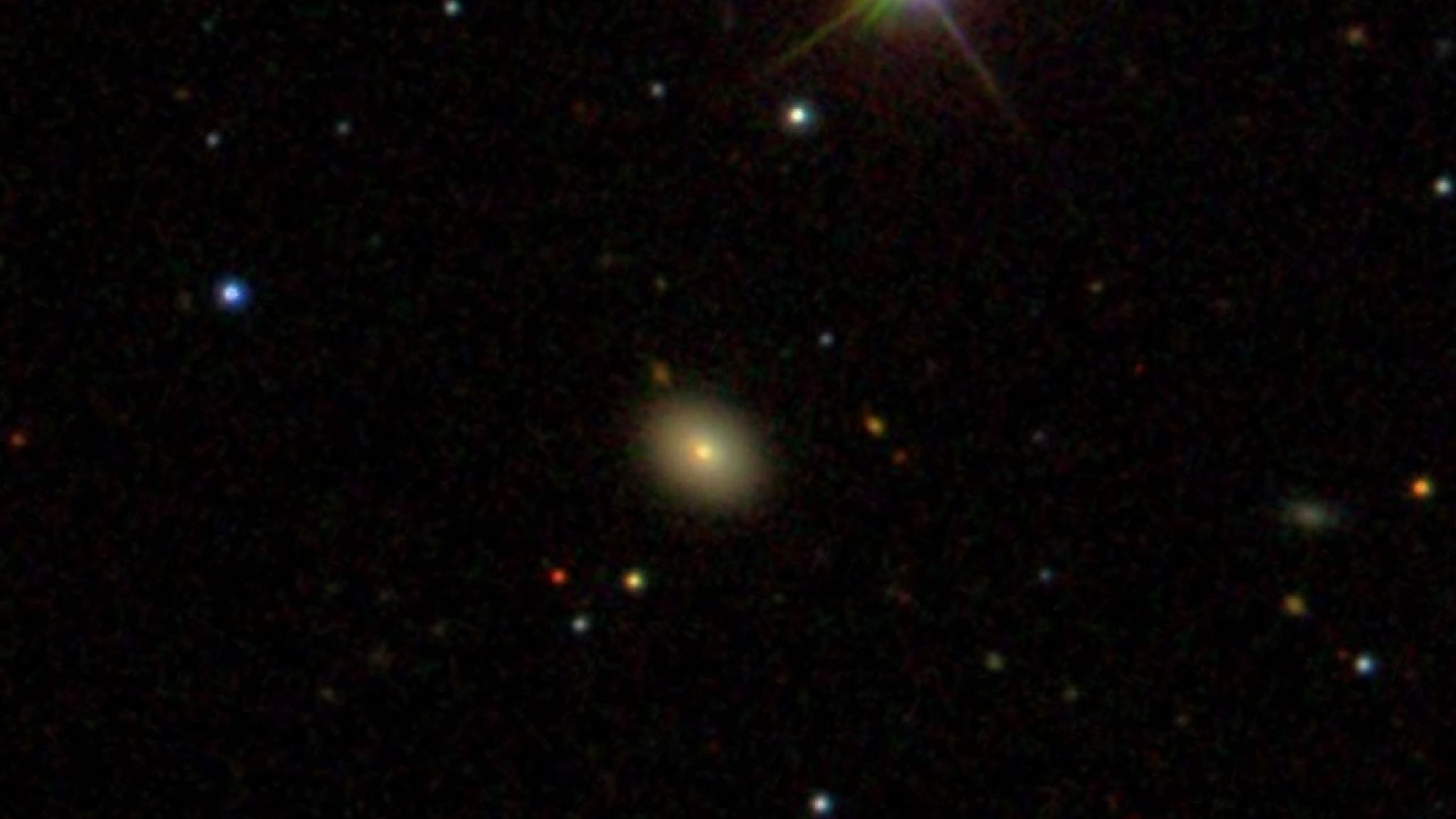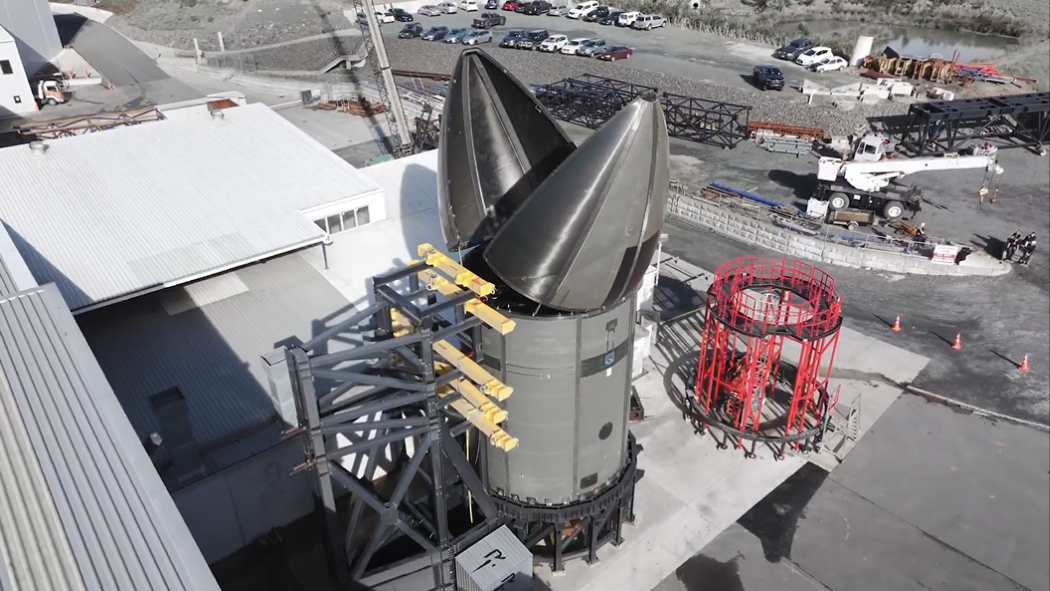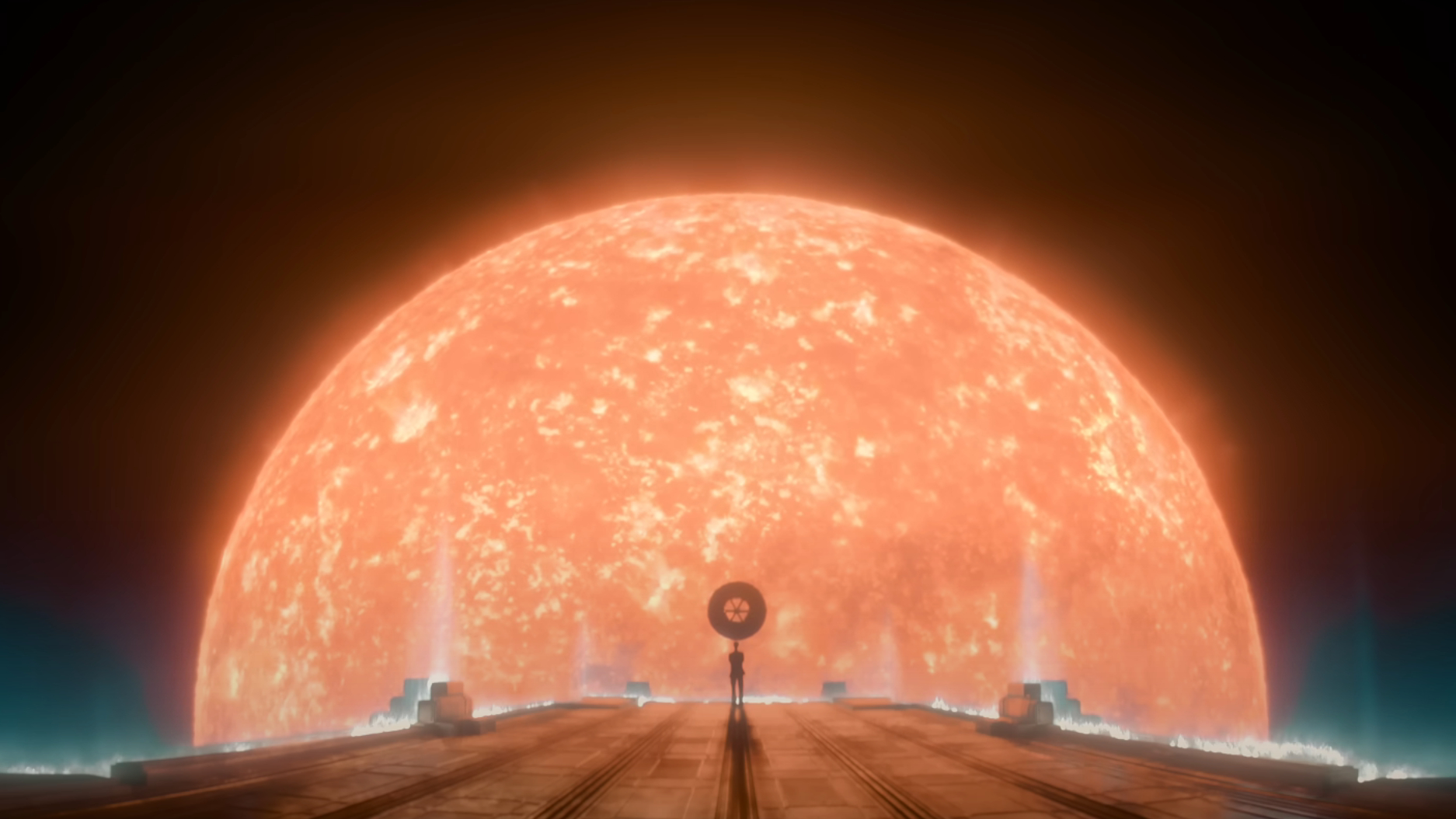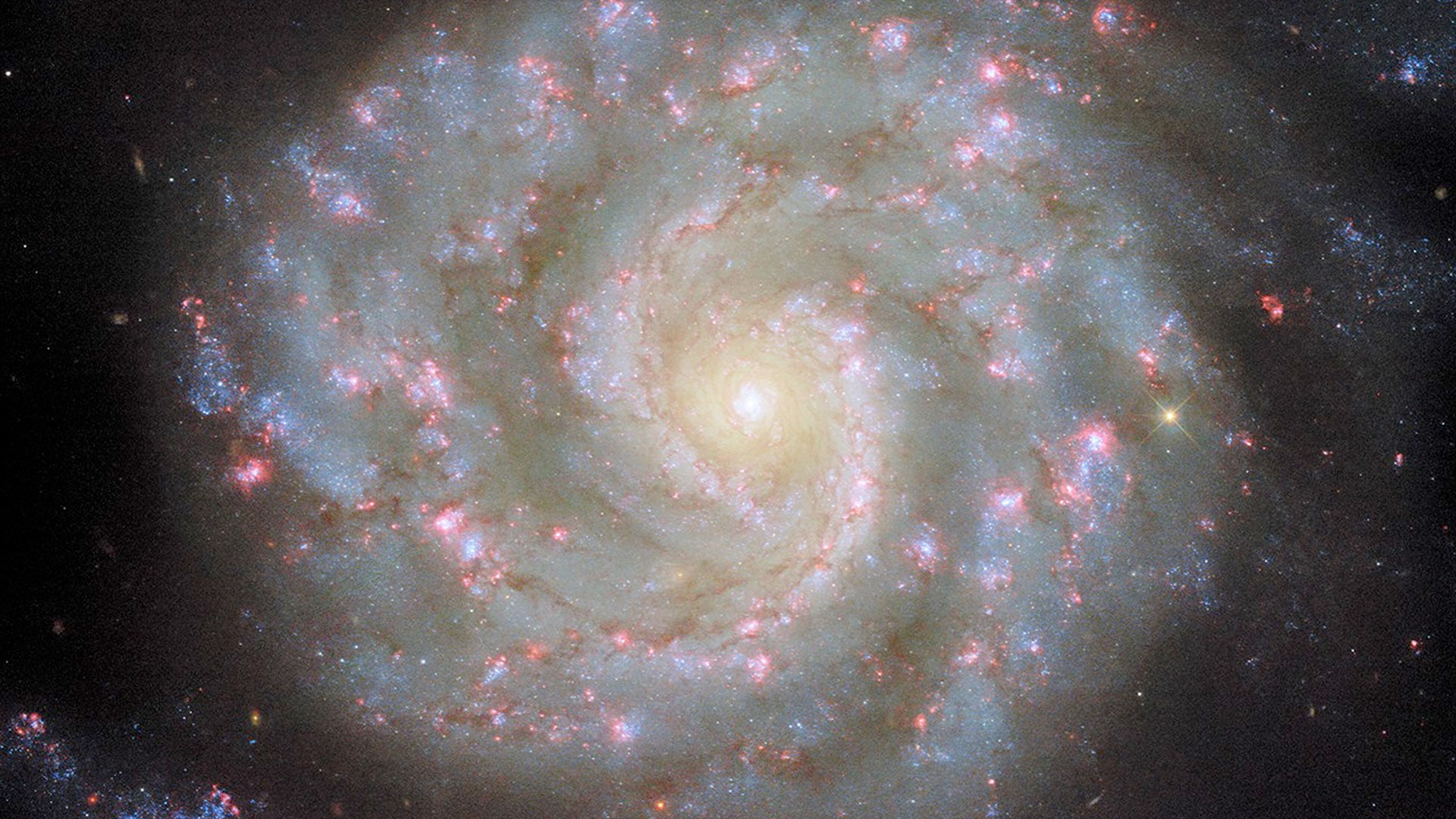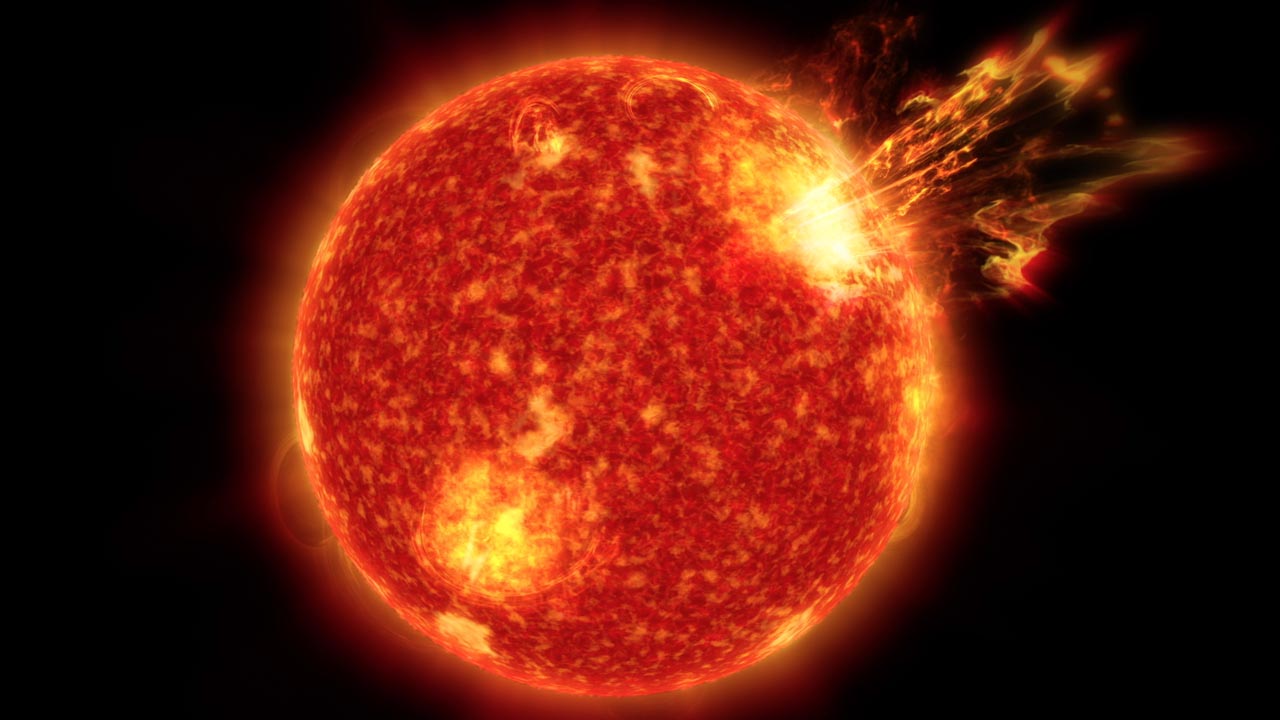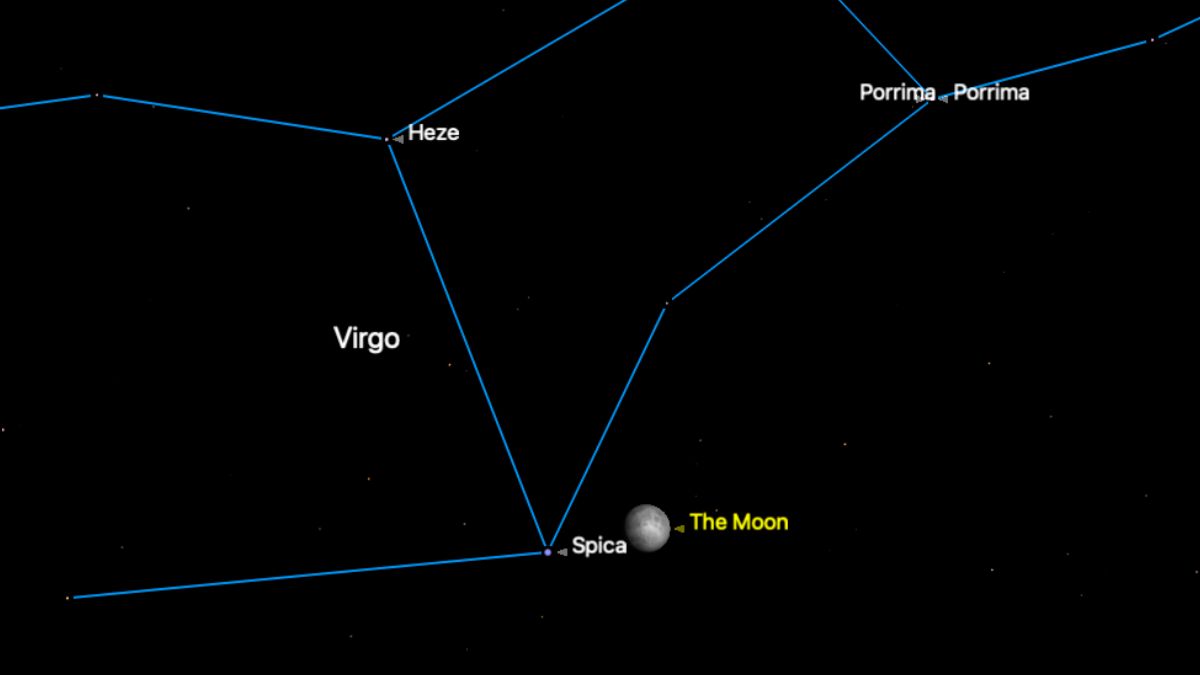Mysterious 'fast radio bursts' from deep space repeat themselves every 16 days
What's creating these unusual signals? And why does this one repeat itself?

One of the universe's deep mysteries just got a lot stranger. Astrophysicists have discovered a clue that could help explain why, every once in a while, superfast bursts of radio waves flash across Earth from deep space. But the clue — a repeating 16-day pattern in one of the bursts, undermines one of the most popular theories for where the bursts are coming from.
Fast radio bursts (FRBs) have likely happened for billions of years. But humans only discovered them in 2007, and have detected only a few dozen of them since. And in June 2019, astronomers finally tracked an FRB to its home galaxy.
But no one knows what causes them. Because these bursts are so rare, unusual and bright — considering that they're visible from billions of light-years across space — physicists have tended to assume they come from a cataclysmic event, such as the collision of stars.
This repeating pattern, however, suggests that something else is going on, that there's some sort of natural machine in the universe for pumping regular shrieks of radio energy across space.
Related: Stephen Hawking's most far-out ideas about black holes
Researchers looking at data from the Canadian Hydrogen Intensity Mapping Experiment Fast Radio Burst Project (CHIME/FRB) first spotted this FRB, known as FRB 180916.J0158+65, in 2019. In January 2020, they published a paper in the journal Nature that reanalyzed old data and found more than one burst from FRB 180916.J0158+65. They traced this FRB back to a relatively nearby spiral galaxy. What's new in this latest paper, published Feb. 3 to the arXiv database, is the regular pattern in the bursts. The FRB, they found, goes through four-day cycles of regular activity, bleating out radio waves into space on an almost hourly basis. Then it goes into a 12-day period of silence. Sometimes the source seems to skip its usual four-day awake periods, or lets out only a single burst. CHIME/FRB is able to watch the FRB only some of the time, they noted, so it's likely the detector misses many FRBs during the awake period.
No one knows what this pattern means, the researchers noted in a statement, but this pattern doesn't fit neatly into any existing explanations for FRBs.
Get the Space.com Newsletter
Breaking space news, the latest updates on rocket launches, skywatching events and more!
In general, patterns like this in astrophysics are often related to a spinning object or orbiting celestial bodies. Neutron stars often seem to strobe regularly from the perspective of X-ray detectors on Earth, because hot spots on their surface spin in and out of view like a lighthouse beacon. And tiny planets may dim the light of the stars they orbit everytime they pass between that star and Earth.
In other words, for astrophysics, patterns tend to indicate rotation. But no one knows if this pattern governs all FRBs or just some of them.
- The 12 strangest objects in the universe
- 50 fabulous deep-space nebula photos
- Supernova photos: Great images of exploding stars
Originally published on Live Science.

Join our Space Forums to keep talking space on the latest missions, night sky and more! And if you have a news tip, correction or comment, let us know at: community@space.com.

Rafi wrote for Live Science from 2017 until 2021, when he became a technical writer for IBM Quantum. He has a bachelor's degree in journalism from Northwestern University’s Medill School of journalism. You can find his past science reporting at Inverse, Business Insider and Popular Science, and his past photojournalism on the Flash90 wire service and in the pages of The Courier Post of southern New Jersey.
-
rod ReplyAdmin said:For the first time, astrophysicists have detected a pattern in fast radio bursts, one of the most mysterious phenomena in the universe.
Mysterious 'fast radio bursts' from deep space repeat themselves every 16 days : Read more
From the arXiv report, "Last year the CHIME/FRB collaboration reported the discovery of eight new repeating FRB sources 4, including FRB 180916.J0158+65, which was recently localized to a star-forming region in a nearby massive spiral galaxy at redshift 0.0337±0.000210. From September 2018 to November 2019, CHIME/FRB has detected a total of 28 bursts from FRB 180916.J0158+65, which remains the most active source from this recent CHIME/FRB repeater sample. The barycentric arrival times for the 28 bursts (including those has been published before) from FRB 180916.J0158+65, corrected for delays from pulse dispersion, are listed in Extended Data Table 1."
Okay, the cosmology calculators, COSMOLOGY CALCULATORS, z=0.0337 is about 0.462E+9 light years distance using the Big Bang model or look back light time distance. Perhaps this mystery will soon be solved. I remember in the mid-60s, the little green men reports that turned out to be pulsars like M1 in Taurus. -
Think twice I would like to add a comment and get feedback about the repeating fast radio bursts vs the non repeating like the Lorimer burst. I don't think the two are related. For these reasons. The data of repeaters always comes at different and higher frequencies and at different timescales . In hundreds of milliseconds not ms. Plus the repeaters seem to not decay evenly to lower f over time but rather pulse as they decay.Reply -
Think twice Reply
Yes, It's hard to find all the data, but If Im correct the first recorded burst for 121102 had a very different lightcurve and was not actually localised. Is it possible FRB experts are fiddling data and pretending the later repeating source...is the same location as the first.rod said:From the arXiv report, "Last year the CHIME/FRB collaboration reported the discovery of eight new repeating FRB sources 4, including FRB 180916.J0158+65, which was recently localized to a star-forming region in a nearby massive spiral galaxy at redshift 0.0337±0.000210. From September 2018 to November 2019, CHIME/FRB has detected a total of 28 bursts from FRB 180916.J0158+65, which remains the most active source from this recent CHIME/FRB repeater sample. The barycentric arrival times for the 28 bursts (including those has been published before) from FRB 180916.J0158+65, corrected for delays from pulse dispersion, are listed in Extended Data Table 1."
Okay, the cosmology calculators, COSMOLOGY CALCULATORS, z=0.0337 is about 0.462E+9 light years distance using the Big Bang model or look back light time distance. Perhaps this mystery will soon be solved. I remember in the mid-60s, the little green men reports that turned out to be pulsars like M1 in Taurus. -
Catastrophe All About Space Issue 132 (Received today) reports a new FRB whichReplyseems to be such a perfect 'twin' to an earlier discovery
Notably, its the second repeating FRB to be associated with a persistent radio source following the localisation of FRB 121102 in 2012.
Now the second example shows that this is a real and critical part of the life of an FRB.
Cat :) -
Catastrophe SETI Homes In On Fast Radio Burst Source FRB 121102 (scitechdaily.com)Reply
HOME SPACE NEWSSETI Homes In On Fast Radio Burst Source FRB 121102TOPICS:AstronomyAstrophysicsBlack HoleCosmologyFast Radio BurstsSETI InstituteUC BerkeleyBy UNIVERSITY OF CALIFORNIA - BERKELEY JANUARY 10, 2018
The 100-meter Green Bank Telescope in West Virginia is shown amid a starry night. A flash from the Fast Radio Burst source FRB 121102 is seen traveling toward the telescope. The burst shows a complicated structure, with multiple bright peaks; these may be created by the burst emission process itself or imparted by the intervening plasma near the source. This burst was detected using a new recording system developed by the Breakthrough Listen project. Credit: Danielle Futselaar
Recent observations of a mysterious and distant object that emits intermittent bursts of radio waves so bright that they’re visible across the universe provide new data about the source but fail to clear up the mystery of what causes them.
The observations by the Breakthrough Listen team at the University of California, Berkeley
Located in Berkeley, California and founded in 1868, University of California, Berkeley is a public research university that also goes by UC Berkeley, Berkeley, California, or Cal. It maintains close relationships with three DOE National Laboratories: Lawrence Berkeley National Laboratory, Los Alamos National Laboratory, and Lawrence Livermore National Laboratory.
" data-gt-translate-attributes="" style="margin: 0px; padding: 0px; border-top: 0px; border-right: 0px; border-bottom: 1px dotted rgb(0, 0, 0) !important; border-left: 0px; border-image: initial; font: inherit; vertical-align: baseline; text-decoration: none !important; color: rgb(0, 0, 0) !important;">University of California, Berkeley using the Robert C. Byrd Green Bank Telescope in West Virginia show that the fast radio bursts from this object, called FRB 121102, are nearly 100 percent linearly polarized, an indication that the source of the bursts is embedded in strong magnetic fields like those around a massive black hole
A black hole is a place in space where the gravitational field is so strong that not even light can escape it. Astronomers classify black holes into three categories by size: miniature, stellar, and supermassive black holes. Miniature black holes could have a mass smaller than our Sun and supermassive black holes could have a mass equivalent to billions of our Sun.
" data-gt-translate-attributes="" style="margin: 0px; padding: 0px; border-top: 0px; border-right: 0px; border-bottom: 1px dotted rgb(0, 0, 0) !important; border-left: 0px; border-image: initial; font: inherit; vertical-align: baseline; text-decoration: none !important; color: rgb(0, 0, 0) !important;">black hole.
The measurements confirm observations by another team of astronomers from the Netherlands, which detected the polarized bursts using the William E. Gordon Telescope at the Arecibo Observatory in Puerto Rico.
Both teams will report their findings during a media briefing on January 10th at a meeting of the American Astronomical Society in Washington, D.C. The results are detailed in a combined paper to be published online the same day by the journal Nature.
Fast radio bursts are brief, bright pulses of radio emission from distant but so far unknown sources, and FRB 121102 is the only one known to repeat: more than 200 high-energy bursts have been observed coming from this source, which is located in a dwarf galaxy about 3 billion light years from Earth./QUOTE]
Dated 11 July 2022.
Cat :) -
Catastrophe Here is the original article:Reply
Discovery of second repeating fast radio burst raises new questions | Space
Cat :)

